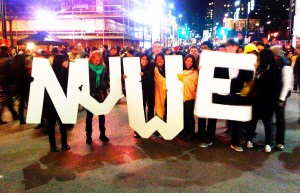Canary Yellow colour of the Grange Park Labyrinth looking good through the snow.
As is Hanzo (半藏),
The good boy who’s sitting in the centre . . .
Canary Yellow colour of the Grange Park Labyrinth looking good through the snow. As is Hanzo (半藏), The good boy who’s sitting in the centre . . . View this post on Instagram A post shared by Hanzo (半藏) (@postcallshiba)
Canary Yellow colour of the Grange Park Labyrinth looking good through the snow.
As is Hanzo (半藏),
The good boy who’s sitting in the centre . . .
@LabyrinthsDOTca Hi Himy! Hope you're well. Do you want to talk about this on radio with me this AM? https://t.co/doxx8A5Ak2 — Mark Towhey (@towhey) December 12, 2022 Hah you can literally see the Grange Park artists name on Google Maps. Too funny — Alan Drummond (@alandrummond1) December 12, 2022 I know who the artist is. […]
@LabyrinthsDOTca Hi Himy! Hope you're well. Do you want to talk about this on radio with me this AM? https://t.co/doxx8A5Ak2
— Mark Towhey (@towhey) December 12, 2022
Hah you can literally see the Grange Park artists name on Google Maps. Too funny
— Alan Drummond (@alandrummond1) December 12, 2022
I know who the artist is. I'm sure the city does too… if not, they should! He's not shy about it.
— Mark Towhey (@towhey) December 12, 2022
It’s almost 24 hours since NuitBlanche 2011 began. It’s also almost 12 hours since it ended early this morning. My body is still aching from hopscotching various art zones carrying my giant NuWe letters performing my own Independent mobile NuitBlanche Giant Outstallation Art, NuWeBlanche (@NuWeBlanche). I did take a break somewhere in there and made […]
It’s almost 24 hours since NuitBlanche 2011 began. It’s also almost 12 hours since it ended early this morning.
My body is still aching from hopscotching various art zones carrying my giant NuWe letters performing my own Independent mobile NuitBlanche Giant Outstallation Art, NuWeBlanche (@NuWeBlanche).
I did take a break somewhere in there and made a point of visiting the Toronto Public Labyrinth to experience Shannon’s Fireflies. This NuitBlanche installation by Seth Hardy (@thirdson), founder and executive director of Site 3 coLaboratory, was intentionally placed in the centre of the labyrinth…
Zack 990 by Joshua Weinberg and Mignolo § Powered by WordPress


